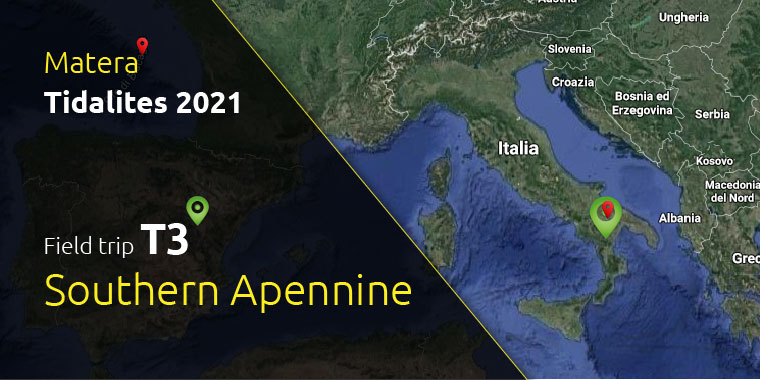Pre-Congress Field Trip
1 – 2 May 2022
The sedimentary response of mixed (lithoclastic-bioclastic) shallow-marine systems to tides and waves in the rock record of southern Italy
M. Tropeano (University of Bari, Italy)
D. Chiarella (Royal Holloway University of London, UK)
S.G. Longhitano (University of Basilicata, Italy)
L. Sabato (University of Bari, Italy)
L. Spalluto (University of Bari, Italy)

Description
The southern Italy ‘foreland system’ preserves mixed deposits accumulated in shallow-marine environments, reproducing types of mixing and degrees of segregation that are thought to be indicative of a variety of geological processes acting at different time scales, including surficial waves and tides.
In the inner wedge-top depozone, small basins reproduced marginal-marine settings with various hydrodynamic conditions, during the Plio-Pleistocene. Siliciclastic-bioclastic sediments accumulated under the influence of local geomorphological elements, such as coastal sheltering, promontories, presence of tectonic highs and local inlets, hosting shoreface to offshore transition zones, whose cross-bedded facies indicate how sensitive shallow-water mixed systems are in recording surficial waves and weak tidal currents.
Along the outer foreland-edge, calciclastic-bioclastic coastal bodies prograded from rocky gently-sloping flanks of a tectonic high, leading to seismic-scale back-stepping clinoforms. Their cross-sectional outcrop views apparently resemble those typical of large tidal sand waves developed in wide tide-dominated oceans. Contrarily, internal facies features reveal the dominance of surficial waves and gravity-driven avalanches on sediment dispersion along clinoform depositional profiles and a very negligible or no tidal influence.
The field trip offers a conclusive extra stop of older (Cretaceous) carbonate strata of the Apulian forebulge depozone recording an intertidal flat setting. This site was a preferential loci for dinosaur transit, as a number of exceptionally well-preserved tracks indicate in one of the largest reptile footprint parks of Europe.
Logistics
The trip will start from and return to Matera during both the days of excursion. All the places are located 1-2 h driving, in easily accessible places with no relevant difficulty.
Number of participants
min 15 – max 30
Cost
Cost 300 Euros (inclusive of: transport, material, 2 packed lunches and 1 dinner; the two days of field trip will be based on Matera; accommodation in Matera is recommended and is in charge of each participant).
Geological Field Trips and Maps - Volume 13 (2.3)/2021
The sedimentary response of mixed lithoclastic-bioclastic Lower- Pleistocene shallow-marine systems to tides and waves in the south Apennine foredeep (Basilicata, southern Italy)
DOI: https://doi.org/10.3301/GFT.2021.07 - Pages: 1-54
Download the open-access field guide at the following button





